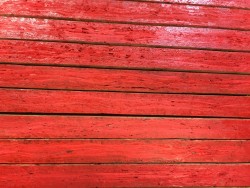Timber frame buildings have had their fair share of the limelight in tabloids over the years, often pictured ablaze topped by outlandish headlines. Yet in the majority of timber frame builds, that projected reality is simply not the case. Little is done to publicise the proper practice, or successes, that this responsibly-regulated industry conforms to while constantly striving to better itself.
Timber frame is fully compliant with all building regulations and proven safe in fire as demonstrated by the Building Research Establishment (BRE) and TRADA with the Timber Frame 2000 (TF2000) project. Its qualities include excellent thermal insulation properties, high structural strength and a predictable charring rate, meaning that wood in large sections in buildings can often be used unprotected.
Perhaps one of the most poignant tabloid stories in recent timber fire safety history was the incident in Peckham, London in 2010. It was from this that the Chief Fire Officers Association (CFOA) demanded ‘urgent’ action be taken to make timber frame building sites safer, which of course led to questions around responsibility.
“According to the Structural Timber Association (STA) in a standard design tender contractor build process, the structural material specification and fire safety lies with the project architect unless specially provided under contactor design proportion,” comments David Murray, Innovation Manager at MEDITE SMARTPLY. “In a project in which the design is contracted out, the responsibility for structural material choice falls to the design and build contractor who typically appoints a design manager. It is an ever-evolving topic and something that we take very seriously, especially when developing our own technologies.”
At the time of the Peckham incident, MEDITE SMARTPLY, leading manufacturers of MDF and OSB panel products, was developing an OSB product that could meet the need for a flame-retardant structural material used in timber frame structures. Key to its design was its ability to fit the most demanding structural applications, such as wall sheathing, flooring and roofing, while also resisting ignition from flame and slowing down early stage fire growth in the event of arson.
The product, SMARTPLY FR OSB/3, underwent years of research and development before coming to fruition in 2014. The timing was very important as in the same year the Health and Safety Executive (HSE) wrote an open letter to the timber frame industry, in association with the STA, stating that those making design and procurement decisions that significantly affect fire risk should consider and reduce said risk during the construction design phase.
To read the full story, go to issue 4 of the Offsite Magazine
Original Link - Offsite Magazine









